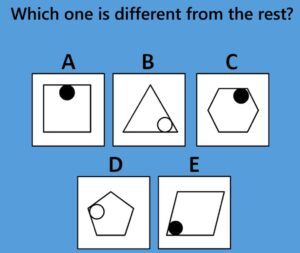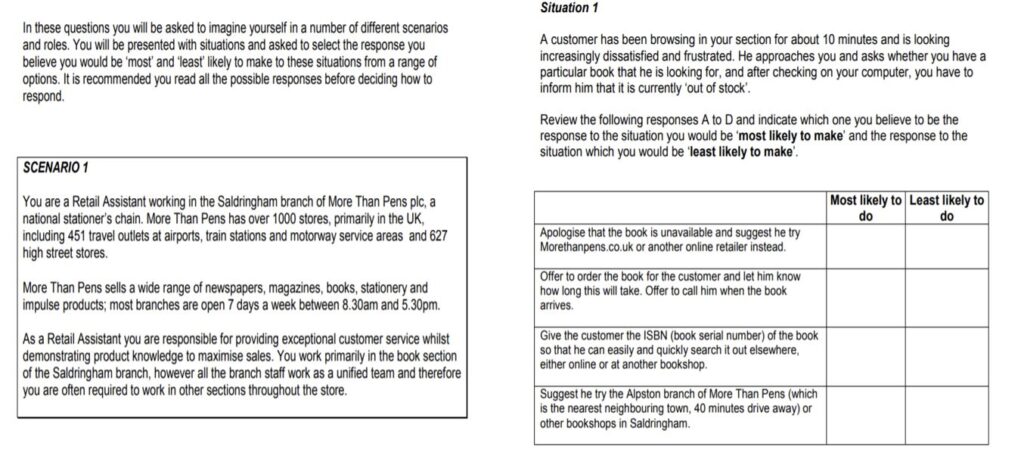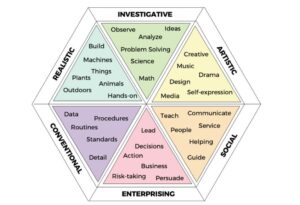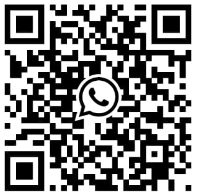Types of Tests in Education
A test serves as a tool for gathering information to assess specific attributes or qualities of an individual, such as knowledge, physical abilities, etc. Examples include unit tests, annual examinations, and assessments of physical fitness or body measurements etc.
The types of tests can be classified as follows.
1. Aptitude Tests
These tests measure whether an individual has the capacity or latent ability to learn a given skill or job if given adequate training. Aptitude can be divided into general and mental ability or intelligence and specific aptitudes such as mechanical, clerical and mental capacity etc.

For example, Psychomotor Tests measure abilities like manual dexterity, motor ability and eye-hand coordination of candidates. Few examples of Aptitude Tests are Bloomberg Aptitude Test (BAT), Armed Services Vocational Aptitude Battery (ASVAB) etc.
2. Achievement Tests (also called Ability Tests)
These tests measure the skill or knowledge which is acquired as a result of training programme and on the job experience. These tests are classified into: Job knowledge test and Work sample test. Job Knowledge Tests (also called Knowledge Tests) are administered to determine knowledge like typing short-hand and in operating computers, or simple mechanical equipment. In Work Sample Test, a piece of actual work is given to the candidate as a test and the candidate is asked to do it. For example, a typing test would provide the material to be typed and note the time taken and mistakes committed.
Few examples are Wechsler Individual Achievement Test (WIAT), Peabody Individual Achievement Test (PIAT) etc.
Types of Achievement Tests
Based on process of construction, achievement tests are classified into two categories, namely, non-standardized tests (commonly known as teacher made achievements tests or TMAT) and standardized tests. In general, teacher made achievement tests are used in classroom teaching learning situations.
Note that aptitude and ability tests are classified as maximum performance tests because they test what you can achieve when you are making maximum effort. There are two different styles of maximum performance test; speed tests and power tests.
3. Attitude Tests
Attitude tests are assessments designed to measure an individual’s attitudes, opinions, beliefs, and preferences on various topics or issues. These tests are commonly used in psychology, sociology, market research, and organizational behavior to understand individuals’ perspectives and behaviors.

There are several types of attitude tests, including:
- Likert Scale: This is one of the most common types of attitude test, where individuals are presented with a series of statements and asked to indicate their level of agreement or disagreement on a scale (e.g., strongly agree, agree, neutral, disagree, strongly disagree).
- Semantic Differential Scale: This test measures attitudes by asking individuals to rate a concept or object on a series of bipolar adjectives, such as good-bad, pleasant-unpleasant, or intelligent-stupid.
- Thurstone Scale: In this type of attitude test, individuals are presented with a list of statements related to a particular attitude or topic, and they are asked to indicate which statements they agree or disagree with. The responses are then used to calculate a score reflecting the individual’s attitude.
- Forced-choice Format: This format presents individuals with a series of statements or items and requires them to choose between two or more options. This method is designed to minimize response bias and social desirability effects.
4. Intelligence Tests
These tests help to evaluate traits of intelligence. Mental ability, presence of mind (alertness), numerical ability, memory and such other aspects can be measured.
Few examples are Wechsler Adult Intelligence Scale, Wechsler Intelligence Scale for Children, Stanford-Binet Intelligence Scale etc.
5. Situational Tests
Situational tests, also known as situational judgment tests (SJTs), are a type of assessment used in various fields, including employment, education, and psychology. These tests present individuals with hypothetical scenarios or situations that they might encounter in real-life situations related to the job or field being assessed.

In a situational test, the test-taker is typically asked to evaluate the scenario and choose the most appropriate course of action from a set of options provided. The goal is to assess the individual’s judgment, decision-making skills, problem-solving abilities, and their ability to handle specific situations effectively.
6. Interest Test

The purpose of this test is to find out whether a candidate is interested or disinterested in the job and to find out in which specific area of the job/occupation the candidate is interested. It is also known as Interest Inventory Test. It was first developed in 1927 by E.K. Strong.
7. Personality Tests
These tests measure a projected employee’s motivation in a particular working environment and try to discover an individual’s value system, his emotional reactions and motivation and his characteristic mood.
Examples of such tests are Bell’s Adjustment inventory, the California test of Personality scale, Minnesota multiphasic personality inventory thematic Apperception test, The Thurstone Temperaments Survey, and Guild Ford-Zimmerman Temperament Survey.
Personality Tests are of 2 types: Objective Tests and Projective Tests.
(a) Objective Tests
Objective Tests measure neurotic tendencies, self-sufficiency, dominance-submission, and self-confidence. Most personality tests are objective tests as they are suitable for group testing and can be scored objectively.
Some important Objective Tests are given below.
- The Minnesota Multiphasic Personality Inventory is a standardized psychometric test which identifies personal, social, and behavioral issues in psychiatric patients.
- The Myers-Briggs Personality Type Indicator, MBTI is a self-report inventory designed to identify a person’s personality type, strengths, and preferences. The questionnaire was developed by Isabel Myers and her mother Katherine Briggs based on their work with Carl Jung’s theory of personality types.
(b) Projective Tests
In Projective Tests, the candidates are asked to project their own interpretation of certain standard stimulus situations basing on ambiguous pictures, figures etc. The way in which he responds to these stimuli depends on his own values, motives and personality.
Some important Projective Tests are given below.
- Thematic Apperception Test (TAT) is a projective psychological test. Proponents of the technique assert that subjects’ responses, in the narratives they make up about ambiguous pictures of people, reveal their underlying motives, concerns. The TAT was developed during the 1930s by the American psychologist Henry A. Murray and lay psychoanalyst Christiana D. Morgan at the Harvard Clinic at Harvard University.
- Rosenzweig Test uses a cartoon format wherein we have series of cartoons with empty (no words inserted in) ‘balloons’. The respondents are asked to put their words in an empty balloon space.
- Rorschach Test consists of 10 cards having prints of inkblots, wherein the design happens to be symmetrical but meaningless. Respondents are asked to describe what they perceive in them.
- Holtzman Ink Block Test is a modification of Rorschach Test and consists of 45 cards, which are based on color, movement, shading and other factors. One response per card is interpreted at three levels of appropriateness.
- Tomkins-Horn Picture arrangement test is designed for group administrations with five plates, each containing three sketches that may be arranged in different ways to portray sequences, which participants consider reasonable.
8. Graphology Test
Graphology Test is designed to analyze the handwriting of an individual. Graphologists examine various features of the handwriting, such as the shape of letters, the spacing between words, the pressure exerted on the paper, the slant of the writing, and other factors. Based on these observations, the graphologist makes interpretations about the individual’s personality traits, emotional state, intelligence, creativity, and other characteristics.
9. Polygraph Tests
These tests are designed to ensure accuracy of the information given in the application. These tests record on paper physiological changes in blood pressure, pulse, skin, sensitivity caused by stress.
10. Essay type Tests
It is a test that requires the student to compose responses, usually lengthy up to several paragraphs. It is useful to evaluate compositional and Presentation skills of the students.
11. Prognostic Test
This test is a measure which predicts how well a person is likely to do in a certain school subject or task. It is meant for fore-telling, prediction and forecast designed to predict the student’s ability or readiness to undertake the study.
UGC NET Previous Year Questions (Types of Tests)
1.) Given below are two statements: (UGC NET 20 Nov Morning 2021)
Statement I: Achievement and aptitude tests are designed to assess the upper limits of the examinees’ knowledge and abilities.
Statement II: Objective personality tests and projective personality tests are designed to measure the typical behaviour and characteristics of examinees.
In the light of the above statements, choose the most appropriate answer from the options given below:
(A) Both Statement I and Statement II are correct.
(B) Both Statement I and Statement II are incorrect.
(C) Statement I is correct but Statement II is incorrect.
(D) Statement I is incorrect but Statement II is correct.
ANS. A
2.) Which of the following is an example of a maximum performance test? (UGC NET 26th June 2019 Morning Paper)
(A) Personality tests
(B) Projective personality tests
(C) Aptitude tests
(D) Interest and attitude scales
ANS. C
3.) In a school, in which there are large number of failures, you may like to develop test for elimination those who are likely to have substantial difficulties in meeting the academic goals of teaching. For this you need to develop test which should be able to predict the individual’s ability or readiness to undertake the study of a school subject successfully. What is the name of such tests?
(A) Achievement tests
(B) Attitude tests
(C) Prognostic tests
(D) Analytical tests
ANS. C
4.) Match the following tests with their purpose:
List 1
(i) Rorschach Test
(ii) Holtzman Ink Block Test
(iii) Rosenzweig Test
(iv) Tomkins-Horn Picture arrangement test
List 2
(a) consists of series of cartoons with empty balloons
(b) consists of 45 cards, which are based on colour, movement, shading
(c) consists of 10 cards having prints of inkblots
(d) consists of five plates each containing three sketches
Options
(A) i – (c) ii – (b) iii – (d) iv – (a)
(B) i – (d) ii – (c) iii – (a) iv – (b)
(C) i – (b) ii – (c) iii – (d) iv – (a)
(D) i – (c) ii – (b) iii – (a) iv – (d)
ANS. D



